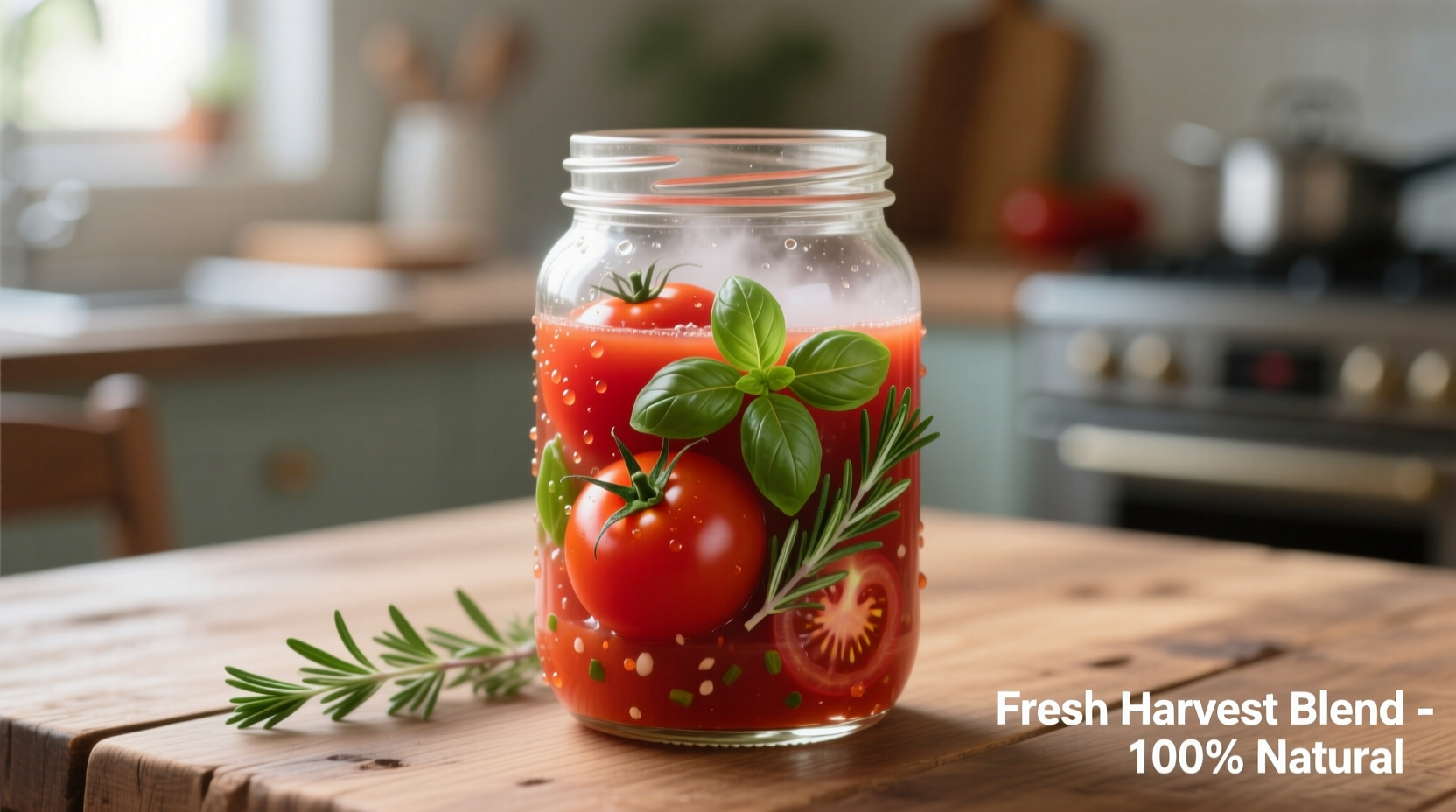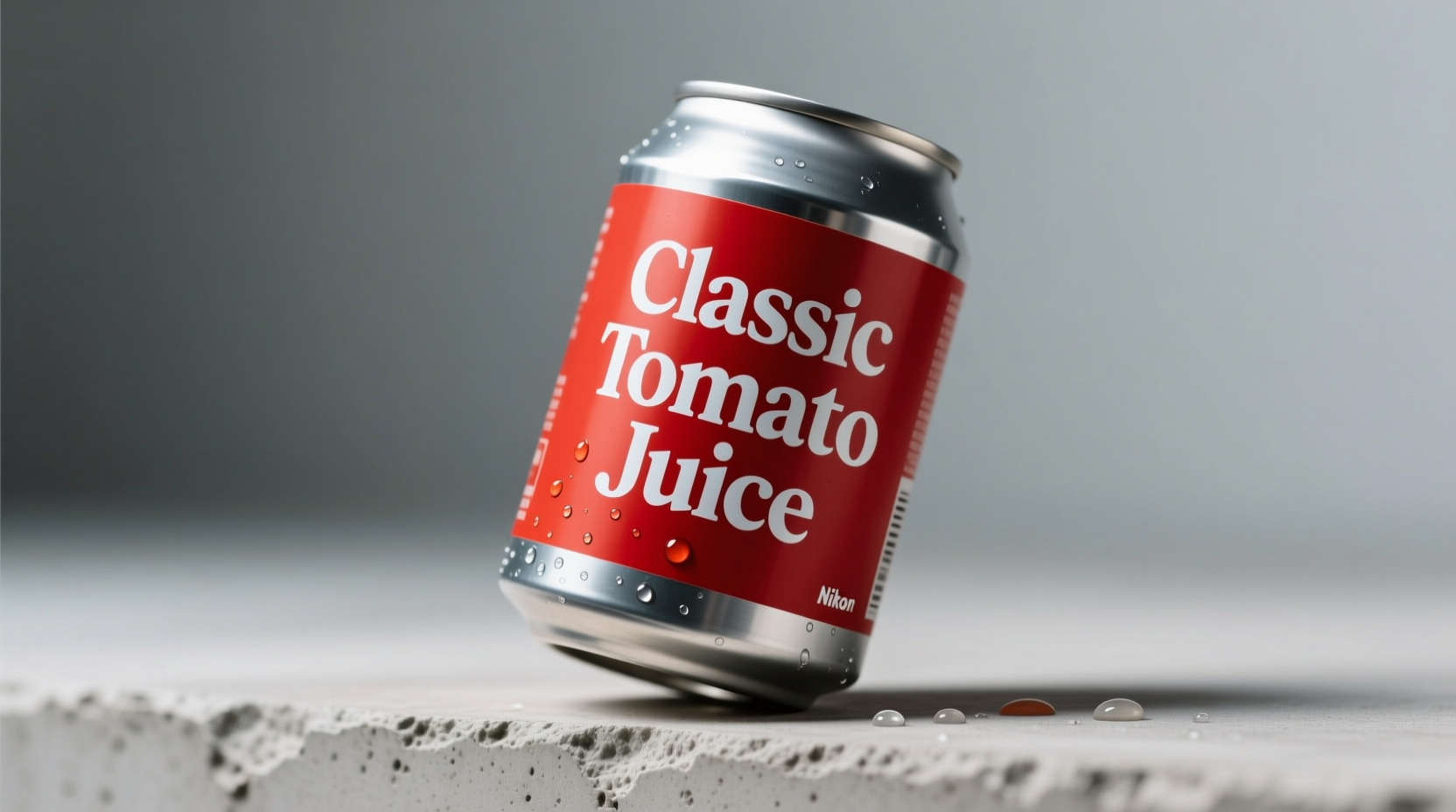Discover exactly how canned tomato juice compares to fresh alternatives, when it's the superior choice for cooking, and how to maximize its nutritional benefits in your kitchen. This comprehensive guide cuts through marketing claims to deliver science-backed information you can trust.
What Exactly Is Canned Tomato Juice?
Canned tomato juice differs significantly from both fresh tomato juice and other tomato products. Unlike tomato sauce or paste, it contains no added thickeners or significant amounts of salt. The USDA defines commercial tomato juice as "a liquid food product obtained from mature tomatoes, with or without the addition of salt, citric acid, or ascorbic acid, but without the addition of water or other ingredients except seasonings."
Processing involves flash-heating tomatoes to 190-200°F before extraction, which preserves nutrients while eliminating harmful bacteria. This thermal treatment actually increases the bioavailability of lycopene, the powerful antioxidant responsible for tomatoes' red color.
Nutritional Advantages Backed by Research
Contrary to common misconceptions, canned tomato juice often outperforms fresh in key nutritional areas. According to USDA FoodData Central, an 8-ounce serving of unsalted canned tomato juice contains:
| Nutrient | Canned Tomato Juice (8 oz) | Fresh Tomato Juice (8 oz) | Daily Value % |
|---|---|---|---|
| Lycopene | 22,000 mcg | 8,000 mcg | --- |
| Vitamin C | 45 mg | 30 mg | 50% |
| Vitamin A | 17,000 IU | 10,000 IU | 22% |
| Potassium | 800 mg | 600 mg | 17% |
The heating process during canning breaks down cell walls, making lycopene up to 4 times more bioavailable than in raw tomatoes according to research published in the Journal of Agricultural and Food Chemistry. This explains why populations with higher tomato product consumption show reduced risk of certain cancers and heart disease.

Smart Selection Criteria for Optimal Quality
Not all canned tomato juices deliver equal quality. When selecting products, consider these evidence-based factors:
- No added sugar - Check labels for hidden sweeteners like corn syrup or dextrose
- BPA-free lining - The FDA has documented potential migration of BPA from can linings into acidic foods
- Low sodium options - Standard versions contain 650-800mg sodium per serving; look for "no salt added" varieties
- Single-ingredient formulation - Avoid products with tomato concentrate, which alters texture and flavor
The American Culinary Federation recommends choosing products labeled "100% tomato juice" without pulp separation. Premium varieties often specify the tomato cultivar used, with San Marzano and Roma varieties delivering superior flavor concentration.
Practical Culinary Applications Beyond Drinking
Canned tomato juice serves as a versatile kitchen staple with applications most home cooks overlook. Professional chefs utilize it for:
- Flavor base for soups and stews - Provides depth without the acidity of canned tomatoes
- Marinades for proteins - The natural acidity tenderizes while adding subtle sweetness
- Cooking liquid for grains - Substitute for water when preparing rice or quinoa
- Vegetable poaching liquid - Infuses vegetables with rich tomato flavor during cooking
- Cocktail base - Forms the foundation for micheladas and virgin marys
When substituting in recipes, remember that canned tomato juice has higher liquid content than tomato sauce. For every cup of tomato sauce required, use 1 cup tomato juice reduced by simmering for 15 minutes.
Storage Guidelines Backed by Food Safety Research
Proper storage significantly impacts both safety and quality. The National Center for Home Food Preservation provides these evidence-based recommendations:
- Unopened cans - Store in cool, dry place (50-70°F) for up to 18 months
- After opening - Transfer to glass container, refrigerate, and consume within 5 days
- Freezing option - Pour into ice cube trays, then transfer to freezer bags for portioned use
Discard any product showing signs of spoilage: bulging cans, off odors, or mold growth. The FDA reports that properly stored canned tomato juice maintains nutritional value for 12-18 months, though flavor peaks within 6-9 months.
When Canned Tomato Juice Outperforms Fresh Alternatives
Understanding context boundaries helps maximize culinary results. Canned tomato juice proves superior to fresh in specific scenarios:
- Winter months - Fresh tomatoes lack flavor complexity during off-season
- Long-cooked dishes - Provides consistent flavor foundation for braises
- Emergency preparedness - Shelf-stable nutrient source during disruptions
- Lycopene optimization - When maximizing antioxidant absorption is the goal
However, fresh tomato juice remains preferable for immediate consumption where bright, acidic notes are desired. The thermal processing that enhances lycopene in canned versions slightly reduces vitamin C content compared to freshly squeezed juice.
Common Questions Answered
Based on frequent consumer inquiries, here are evidence-based answers to your most pressing questions about canned tomato juice:











 浙公网安备
33010002000092号
浙公网安备
33010002000092号 浙B2-20120091-4
浙B2-20120091-4